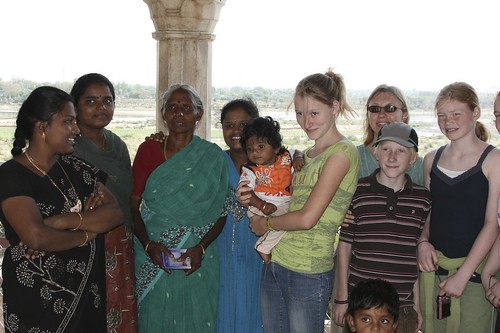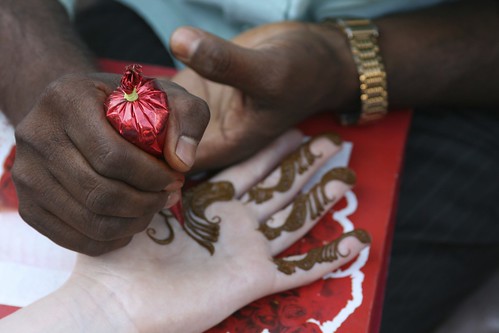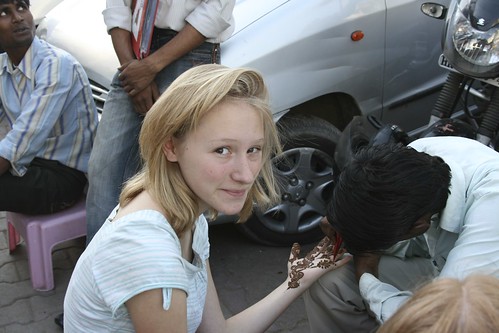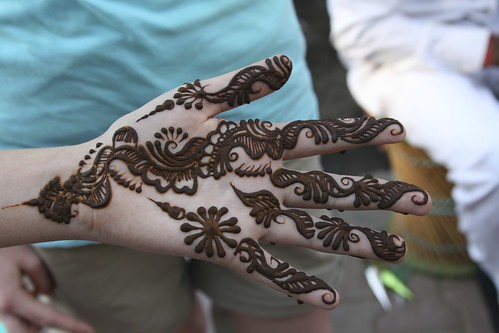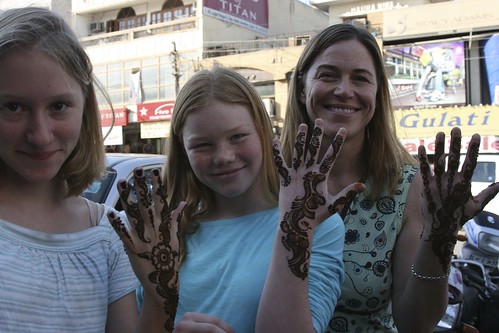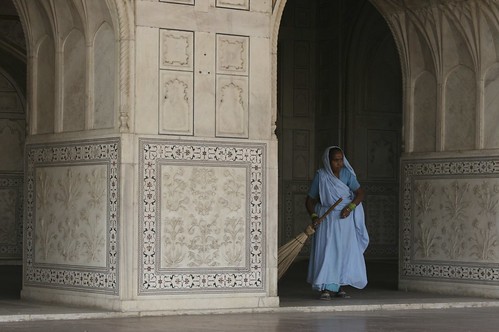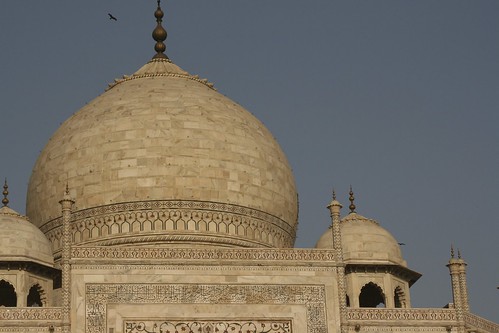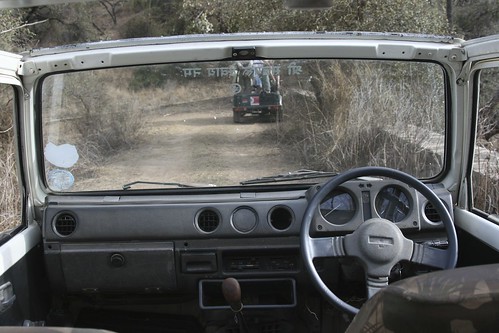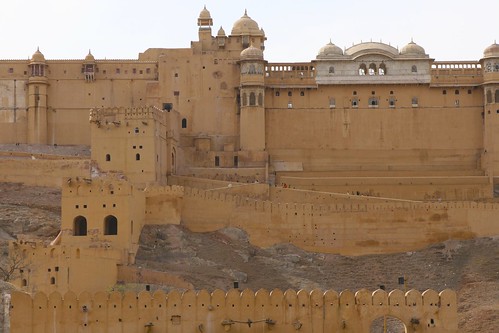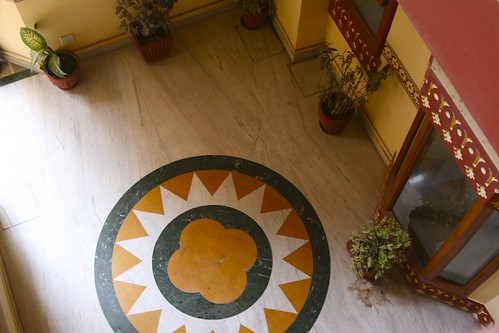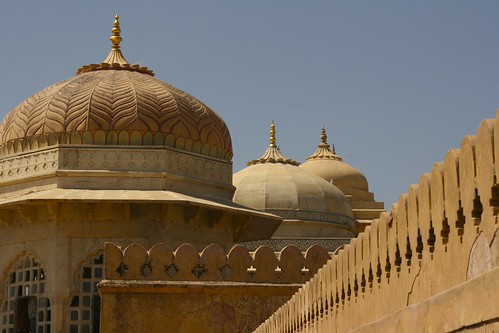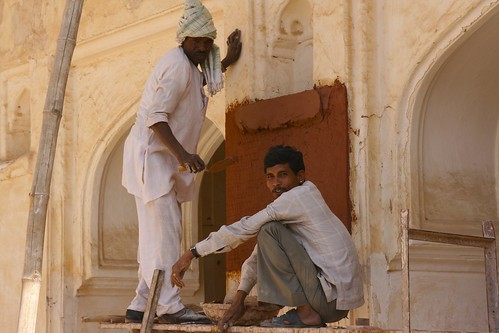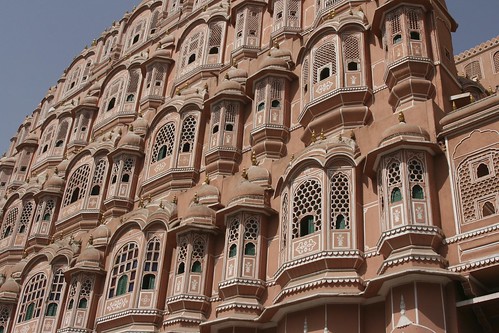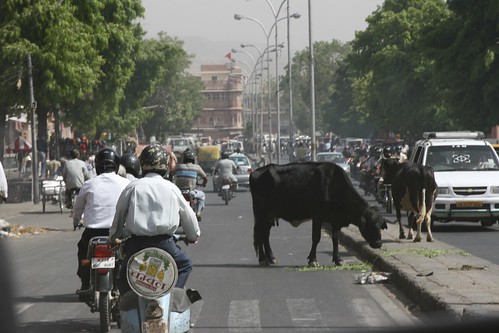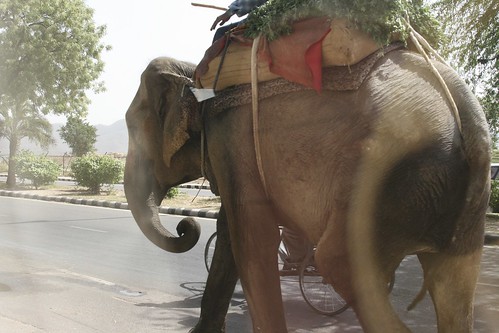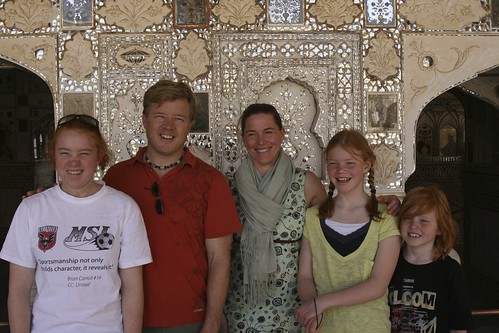Category — India
Our Time In India
India was crazy, chaotic, dirty, overwhelming – and simply magic. There is no other way to describe it.
Much of what makes India special is the people. They are warm and wonderful hosts – and they can drive you crazy.
The country may not be everyone’s cup of tea, but a visit there will be an unforgettable experience. Guaranteed.
Our report on India and our recommendations are here.
May 29, 2009 1 Comment
Observed in Delhi
Caroline joins Isabel and Lisa Callahan in getting the henna tattoo treatment in a Delhi neighborhood.
May 27, 2009 2 Comments
Love and Betrayal
Here’s the thing I didn’t know about the Taj Mahal: It’s a Muslim mausoleum—the final resting place of Mumtaz Mahal, the third wife of Shah Jahan, India’s most successful Mughal emperor.
Mumtaz died giving birth to their fourteenth child. On her deathbed, she asked her grief-stricken husband to promise her three things: First, never to marry again. Second, always to protect and care for her children. And third, to build her a mausoleum more beautiful than the world had ever seen.
In 1632, one year after Mumtaz’s death, Shah Jahan began building the Taj Mahal. It was completed in 1648. That might have been the end of the story – except it wasn’t. The Shah’s troubles were just beginning.
Jahan had many sons, all vying to succeed him as Emperor. Most thought his son Dara Sikoh would eventually succeed him, but another son, Aurangzeb, had different plans. He raised an army and went to war with his brother, soundly defeating him.
Aurangzeb then returned to his father, bringing him his brother’s severed head on a silver platter. Then he imprisoned his father in Agra’s Red Fort, about a mile down the river from the Taj Mahal. Shah Jahan was confined to a suite of rooms with a view of the Taj.
Shah Jahan spent the rest of his days constantly reminded of his beloved wife’s death and angry son’s betrayal.
According to legend, Aurangzeb may have denied the world another architectural marvel.
May 25, 2009 2 Comments
On The Search for Tigers
“Just this morning sir, one of our guides spotted a tiger, over there.” Our driver with an unpronounceable name was pointing towards a rock outcropping in a dried out gully.
We stared at the rocks for what seemed like 15 minutes, as though doing so would bring the tiger back. But no such luck. Finally we moved on, four-wheeling along ridge lines, across gullies, through a deciduous forest punctuated with the occasional growth of bamboo.
We were on the search for tigers in the Sariska Tiger Reserve.
After about an hour, I asked our guide: “So how many tigers are there in the sanctuary?”
“Three, sir.”
“Three?” Hmm, I probably should have asked that question before we added Sariska to the itinerary. “And how big is the sanctuary?”
“Eight hundred square kilometers, sir.”
I’m no mathematician, but by my rough calculation, three tigers lived in an area that was about 300 square miles. Talk about your needle in a haystack.
“Why so few tigers?” I asked.
“We are fortunate to have any at all,” our guide said. “Forty, fifty years ago, there were many tigers here. But poachers.” He shook his head. “From 2002 till the summer of 2008, there were no tigers here at all. Then the government gave us a tiger couple, and already they have a cub.”
He added: “But this is a big sanctuary, and the poachers have not left India. Who knows how long we will have them.”
May 22, 2009 4 Comments
Amber Fort, Pink City
In 1526, Babur, a Muslim descendant of Ghengis Khan, swept across the Kyber Pass into northern India and established the Mughal Empire. By 1600 Muslim emperors had expanded their control over the entire Indian subcontinent.
For most of the next 100 years, they maintained control over the majority Hindu population with a mixture of terror and tolerance, waging wars against Indian rajas and princes while tolerating, even supporting aspects of Hindu culture.
It was against this backdrop that Maharaja Sawai Jai Singh II built the city of Jaipur, known today as the “Pink City.” Singh II, a Hindu, was considered a skilled diplomat in his dealings with his Muslim overlords. He was also a bit of a visionary.
When Singh II came to power, he ruled from the city of Amber, just 11 kilometers from where Jaipur is today. The Amber Fort sits on top of a mountain over looking the city. From the outside, the fort is an impressive defensive structure.
Inside, it is a rather ornate palace and is currently undergoing an extensive renovation. One of the more interesting features Singh II had built into the palace: 11 private passageways to each of his wives’ bedroom suites. The raja’s discretion ensured domestic tranquility.
In 1727 Singh II moved his capital city to Jaipur. He needed more room and access to more water to accommodate a growing population. Urbanists consider Jaipur one of India’s best planned cities; its urban plan is based on ancient Hindu planning principles.
In 1853, when the Prince of Wales visited Jaipur, the whole city was painted pink to welcome him.
More pictures from Jaipur are here.
May 20, 2009 2 Comments
Incredible India
This video tries to capture the chaos that is India.
If you missed some of our more recent video efforts, be sure to check out I’m On A Train, China Dreams and Discovering Japan.
May 18, 2009 1 Comment
Vishnu, Take the Wheel
“My name is Vishnu, like the god. But I am not a god, sir. I am your driver.” And a good driver he was, effortlessly navigating the chaos of India’s roads.
The thing about driving in India is that you never know what might come at you next. It could be an auto rickshaw, a handcart laden with bricks or a dozen people on broken-down bicycles.
Or it could be something potentially more dangerous: An elephant, a camel, a cow, a rhesus monkey. You just never know.
Vishnu stayed calm and collected no matter what appeared in his windshield, perhaps because of the symbols of two Hindu gods that rested on the dashboard of his van. Before we left Delhi, Vishnu explained them to me.
First, there was Ganesh, The Remover of Obstacles. “He is very important,” Vishnu explained. “Ganesh will help get us to our destination safely.”
Next to Ganesh was Hanuman, the playful monkey god. “Hanuman is my personal god,” said Vishnu. “He supplies me with strength and courage.”
Vishnu clearly took great pride in his van. He kept it spotless and would immediately sweep out any dirt we tracked in. Once when I tried to open the door to let myself out, he scolded me: “Sir, I will open the door for you. It is my duty.”
Throughout our trip, Vishnu was very protective of our large group, helping to fend off local touts whenever we made a stop. But he was always polite, even gentle when he came between us and the hawkers and beggars.
On the third day of our road trip, Vishnu executed a driving maneuver rarely seen in the United States — the U-Turn into oncoming traffic.
May 15, 2009 4 Comments
Enter the Calvary
For months India had loomed on the horizon. The prospect of traveling there both excited and terrified us. We had been warned, India is the Olympics of Travel, a very difficult place to navigate.
Months earlier, when we were visiting Machu Picchu, we met a traveler from New Zealand who told us, “Traveling in India is a moral test. The poverty is so pervasive, so in-your-face. You need to be prepared for it, and you need to decide how you are going to handle it.”
My Australian friend John, who had made several trips to India, offered this advice: “Mate, the secret to traveling to India is to get yourself a really good hotel. You’ll need a place where you can come back and just relax after a day of wandering round that country.”
With deep fatigue setting in, we weren’t sure if we could handle the aggressive touts, chaos and emotional demands of India. But as is so often the case, providence provides.
Fortunately for us our friends the Callahans made plans to meet us in Delhi. We were glad to see them, to get news (and a few comforts) from home – and relieved to not have to face India on our own.
Best of all, Brian Callahan took the lead on setting the itinerary and dealing with the tour guides, hotels and touts. For the first time in a long time, we could relax and just be where we were.
Which is the perfect state of mind for India.
May 13, 2009 5 Comments

